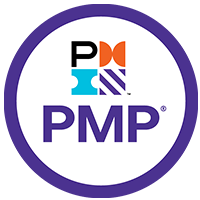Which is preferable—Kubernetes or Docker—and is there even a choice to be made? Two names stand out as open-source leaders in container technologies: Kubernetes and Docker. Although they are fundamentally dissimilar technologies that aid users in managing containers, they work best together and have considerable capability alone. In this sense, choosing between Kubernetes and Docker isn’t a matter of deciding which is superior; in fact, they can work together rather than against one another. Therefore, neither is a better option when deciding between Kubernetes and Docker. Instead of replacing one another, Kubernetes and Docker are complementary container technologies. This is because Kubernetes announced in 2021 that it would stop supporting Docker as a choice for container runtimes. Despite this, Kubernetes and Docker continue to work well together and provide obvious advantages, largely because of the containers’ core technology.
A container is a piece of software that encapsulates an application’s dependencies and makes the code portable between IT environments. It is independent and separated from the host OS, which is often Linux. Containers are distinct from virtual machines (VMs), which use a hypervisor to virtualize an operating system. Containers are small, quick, and portable since they just contain the application and its libraries and dependencies. Additionally, they automatically employ the host’s DNS settings, which increases their efficiency and flexibility in a variety of IT situations. Containers allow engineers to quickly and consistently create applications for distributed systems and cross-platform settings. They are best suited for DevOps workflows since their mobility avoids conflicts between functional teams. Containers are perfect for microservices architectures since they are compact and light. Modernising on-premises programs and connecting them with cloud services frequently starts with containerization.
An open-source containerization technology called Docker makes it easier to create, deploy, and manage containers. The organisation that creates the commercial Docker product is also referred to as Docker, Inc. Since its early development on Linux Containers (LXC), Docker has grown to be the most widely used containerization technology. Its mobility, which enables containers to run across any desktop, data centre, or cloud environment, is its primary advantage. LXC’s early success is overshadowed by Docker’s specialised technologies. Applications can continue to function in this way while one component is being updated or fixed.
Developers can create and execute containers using Docker, a container runtime. To define and execute containers, it makes use of tools like Docker Engine, Dockfile, and Docker Compose. While Dockfile specifies the essential commands for creating a Docker container image, Docker Engine provides a runtime environment that enables developers to build and operate containers. Using a YAML file to define services, Docker Compose is a tool for developing and executing multi-container applications.
Due to its function as a container, rather than a container runtime, Kubernetes discontinued supporting Docker as a container runtime. Kubernetes introduced Docker Shim, a different runtime that eased communication between the two technologies, to support Docker as a runtime. But now that CRI-O is available, Kubernetes can provide a variety of container runtime choices utilising the industry-standard Container Runtime Interface (CRI). However, Kubernetes is still capable of managing containers created using Docker’s image format, the Open Container Initiative (OCI).
The containerization technology known as Docker has several benefits, such as lightweight portability, rapid application development, scalability, and the capacity to trace and roll back container images. Regardless of the OS, it enables programs to travel between environments, and it can be deployed to various settings in response to shifting business demands. Docker containers may be easily and quickly produced and controlled. Although Docker Swarm, the platform’s container orchestration tool, is supported, Kubernetes is the most well-liked and reliable option for managing large enterprise applications with hundreds or thousands of containers. A command-line program called Docker is used to build and manage containers. The four primary commands it provides are build, create, run, and exec. Build produces a new Docker image from scratch, starts it immediately after creation, and issues a new command within a container that is already running.
The deployment, management, and scaling of containerized applications are all automated via the open-source container orchestration technology known as Kubernetes. The control plane is a container, and it uses a cluster architecture to operate. The orchestration of containers is controlled by the master node, which also facilitates service discovery and controls large volumes of data throughout their lifetimes. Kubernetes was developed by Google and is overseen by the Cloud Native Computing Foundation (CNCF). Due to its strong functionality, vibrant community, and portability across top public cloud providers like IBM Cloud, Google, Azure, and AWS, it has become very popular.
In addition to automated deployment, service discovery, load balancing, auto-scaling, self-healing capabilities, automated rollouts and rollbacks, storage orchestration, and dynamic volume provisioning, Kubernetes also has several benefits. It uses load balancing and service discovery, restarts, replaces, or reschedules containers when they fail or die, and checks application health for problems. It also plans and automates container deployment across several compute nodes. A persistent local or cloud storage system is also automatically mounted to lessen latency and enhance user experience.
The complementary technologies Kubernetes and Docker provide a potent containerization combination. Developers may execute apps throughout their IT infrastructure without encountering compatibility problems thanks to Docker’s simplified application packaging into isolated containers. Docker containers are scheduled and automatically deployed for high availability by Kubernetes. It provides an intuitive graphical user interface, load balancing, self-healing, automated rollouts, and rollbacks. Kubernetes is a good option for businesses planning to scale their infrastructure, whereas Docker can manage challenging scaling difficulties.
Because Docker was not intended to be integrated into Kubernetes, there is some ambiguity surrounding its use with Dockershim in Kubernetes clusters. While Dockershim is a user-friendly abstraction layer, Docker is a high-level container runtime. Due to this, a program called Dockershim is required to access contained, even though Kubernetes does not require it. As of Kubelet version 1.23, Dockershim is being removed, ending support for Docker as a container runtime. Docker is not required for Kubernetes since it does not adhere to CRI, the Container Runtime Interface. It is not required to switch from Docker to another supported container runtime, though. Moving to a different runtime will break a procedure in your cluster that depends on the underlying Docker socket (/var/run/docker.sock). The use cases kaniko, img, and buildah are alternatives.
The Docker runtime inside a Kubernetes cluster is unrelated to the development version of Docker. Because Docker is still functional in its current form, this move may confuse developers. Using containers and CRI-O, Kubernetes can pull and execute the OCI (Open Container Initiative) image that Docker created. Some users may experience difficulties as a result of this adjustment, but overall, it will be advantageous over time. The team welcomes inquiries of any complexity or expertise level because it anticipates that the change would simplify things for developers. The intention is to ensure that everyone is informed about the impending changes, and it is hoped that this has clarified the majority of concerns and reduced some anxiety.
























